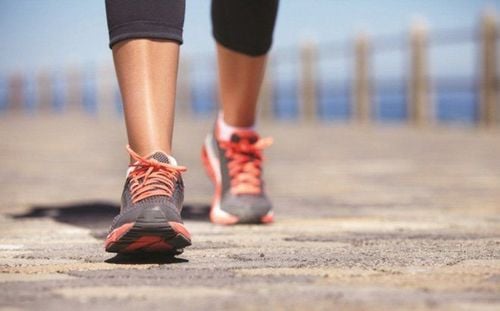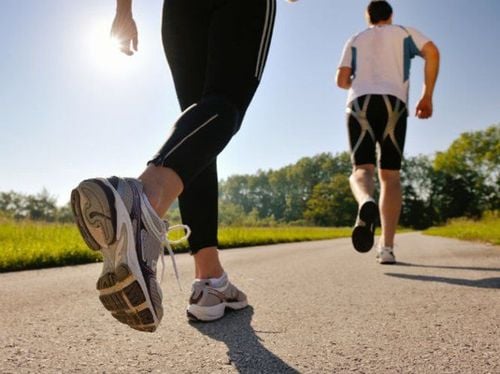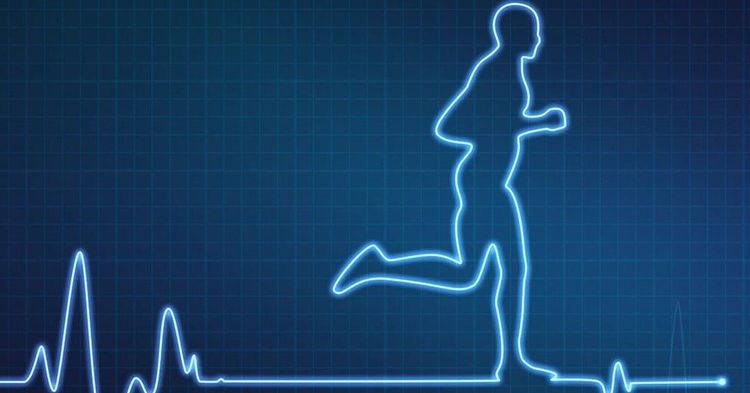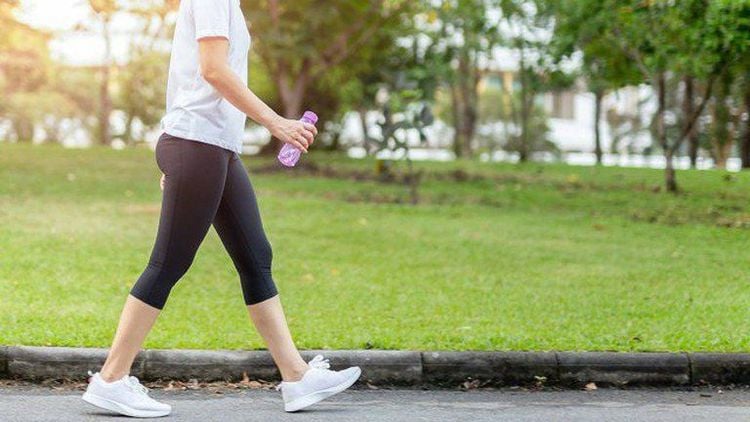A healthy adult typically chooses a pace of about 2.8 miles per hour. The term "brisk walking" is relative; what feels fast for one person may seem slow or moderately quick to another, depending on their fitness level. This article will help you understand the ideal pace for brisk walking, its benefits, and the calories burned during this activity.
1. What is Brisk Walking?
Fast walking is an effective way for individuals to increase their activity levels or for those looking to incorporate a more active lifestyle. Unlike other forms of exercise, brisk walking is a relatively safe activity with a lower risk of injury, and it is also a low-cost activity.
When someone brisk walking several times a week, they can reap health benefits such as lower blood pressure and a reduced risk of developing type 2 diabetes, as well as issues related to metabolic cardiovascular diseases.
1.1. What is Brisk Walking and How is It Measured?
Brisk walking is an example of moderate-intensity aerobic activity. The U.S. Centers for Disease Control and Prevention (CDC) defines moderate-intensity aerobic activity as any activity that causes a person to sweat and raise their heart rate to a point where they can talk but cannot sing (based on the talk test). As a general guideline, to walk briskly, a person should move at a speed of up to 7.5 km/h. Experts recommend that a person should aim to walk briskly for at least 30 minutes each day.
1.2. What Are the Health Benefits of Brisk Walking?
Engaging in regular brisk walking or simply increasing your daily physical activity can lead to a variety of health advantages. The benefits of regular brisk walking include a reduced risk of cardiovascular disease, diabetes, and some types of cancer, such as bladder cancer, breast cancer, and colon cancer. A 2017 report also indicated that brisk walking could have a positive impact on people's health and is an accessible method to help people increase their activity levels. The authors of the report defined brisk walking as walking at a speed of at least 5 km/h. They stated that people currently dealing with certain health issues could receive more health benefits from brisk walking for at least 10 minutes each day. They also noted that individuals who engage in less than 30 minutes of physical activity per week may find this form of exercise more accessible than other types of workouts.

To understand the positive effects of walking on human health, researchers have examined the relationship between different walking speeds and health outcomes. A 2018 study synthesized survey data from over 50,000 walkers in England and Scotland and investigated the impact of walking speed on people’s health. The researchers concluded that there may be a link between walking at a fast or moderate pace and a reduced risk of death from all causes or from cardiovascular disease, compared to walking at a slow pace.
Walking briskly is also beneficial for brain health. A 2014 study concluded that a six-month outdoor brisk walking program, twice a week, increased hippocampal volume in older women at risk of mild cognitive impairment. However, the researchers noted that further studies are needed to confirm the accuracy of this conclusion.
1.3. Can brisk walking help with weight loss?
According to a 2017 report, 10 minutes of brisk walking each day can help inactive or less active individuals achieve a healthy weight. The report also defines "inactive" as engaging in less than 30 minutes of moderate-intensity activity per week. However, brisk walking alone will not lead to weight loss. If someone wants to lose weight, they also need to consider their daily diet and caloric intake. To maintain a healthy weight, one needs to balance the food they eat with the physical activity they engage in daily.
1.4. Techniques for Brisk Walking
Here are some tips for proper walking form:
- Start slowly to warm up and cool down by gradually reducing speed.
- Keep your shoulders down and relax while maintaining an upright and elongated back.
- Walk with a heel-to-toe motion, placing your heel down first.
- Gradually increase the incline of the path you walk on to add difficulty to the exercise.
- If your feet feel sore after brisk walking, you can massage them or soak them in warm water.

2. Ideal Pace, Benefits, and Calories Burned from Brisk Walking
The term "brisk walking" may seem a bit vague. To clarify what brisk walking truly means, there are several ways to measure the speed of a person to ensure they are walking fast enough. The three criteria below are means to evaluate the effectiveness of brisk walking as an exercise:
2.1. Target Heart Rate
One way to determine whether someone is walking fast enough is to measure their heart rate. The target heart rate for most adults during exercise falls within 50 to 85 percent of their maximum heart rate. Exercising within this target heart rate range means that individuals are getting the most benefit from their workout. According to the American Heart Association:
- The target heart rate for moderate-intensity exercise is about 50 to 70 percent of a person's maximum heart rate.
- The target heart rate for vigorous-intensity activities is about 70 to 85 percent of a person's maximum heart rate.
So, the question is, what exactly is a person’s maximum heart rate, and how can it be determined?
A person’s maximum heart rate is calculated by subtracting their age from 220 beats per minute (bpm). For example, for a 40-year-old person, their maximum heart rate would be 220 - 40 = 180 bpm.
To find the target heart rate range, follow these steps:
- For the lowest target heart rate, multiply the person’s maximum heart rate by 0.50 (50 percent). For example, for a 40-year-old, it would be 180 bpm × 0.50 = 90 bpm.
- For the highest target heart rate, multiply the person’s maximum heart rate by 0.85 (85 percent). For example, for a 40-year-old, it would be 180 bpm × 0.85 = 153 bpm.
- For this person, their target heart rate when walking would be between 90 and 153 beats per minute.

If you're unsure about how to measure your heart rate, you can follow this method:
- Place the tips of your index and middle fingers on the inside of your left wrist until you can feel the pulse. Avoid using your thumb to measure the pulse, as each person's thumb has its own pulse, which may lead to an inaccurate reading.
- Look at a clock or stopwatch and count the number of beats you feel with your fingers for 30 seconds.
- After recording the result, multiply the number by 2 to calculate the beats per minute.
- For example, if you count 55 beats in 30 seconds, your heart rate would be 110 beats per minute (55 x 2).
2.2. Steps Per Minute
Another way to measure the pace of brisk walking is by counting the number of steps taken. A study published in the British Journal of Sports Medicine showed that if a person can walk at least 100 steps per minute, it indicates that they are walking fast enough to gain significant physical benefits. Using a fitness tracker can help monitor your step count and walking speed.
2.3. The Talk Test
The third method for determining if you are walking fast enough does not require any calculations. Instead, you simply start talking while walking:
- If you can speak comfortably with a little shortness of breath, you are likely walking at a moderate pace, fast enough to be considered brisk walking.
- If you cannot talk easily because you're out of breath, the pace may be too fast, and you may need to slow down.
- If you can talk or even sing without difficulty, the pace is likely too slow to be considered brisk walking. In this case, you need to speed up to match the brisk walking pace.
2.4. Frequency of Brisk Walking
The American Heart Association recommends that everyone should aim for about 150 minutes of moderate-intensity exercise or 75 minutes of vigorous activity each week. If we follow the recommendation to exercise at a moderate pace for 150 minutes per week, a reasonable goal is to briskly walk for 30 minutes a day, 5 days a week.
If there is not enough time or physical ability to walk 30 minutes at a time, the workout can be broken down into three 10-minute walks or two 15-minute walks each day. It's also helpful to spread the activity throughout the week and walk for at least 10 minutes each time.
While 150 minutes of moderate-intensity exercise is a good goal for the week, we will reap even more benefits if we walk briskly for longer periods.

How Many Calories Can You Burn While Brisk Walking?
The rate at which a person burns calories depends on several factors, including:
- Body weight
- Age
- Gender
- Muscle mass
- Exercise intensity
- Duration of exercise
To burn more calories, the basic approach is to increase both walking speed and distance. For example, a person will burn more calories if they walk at a speed of 6.5 km/h for 35 minutes compared to walking at 5 km/h for 20 minutes.
Walking briskly, even just 10 minutes at a time, can benefit our physical and mental health in many ways. By improving blood flow, brisk walking can enhance heart and lung health. It can also reduce the risk of various health issues and help control weight. Additionally, brisk walking can improve brain function, boost energy levels, reduce stress, and enhance sleep quality.
Please follow our website (www.vinmec.com) for more information and guidance on health care, which will be updated regularly.
References: healthline.com, granolasoul.com, medicalnewstoday.com
To arrange an appointment, please call HOTLINE or make your reservation directly HERE. You may also download the MyVinmec app to schedule appointments faster and manage your reservations more conveniently.








